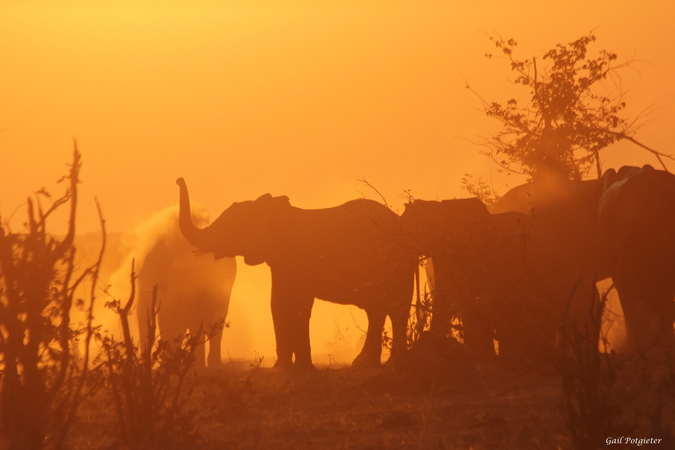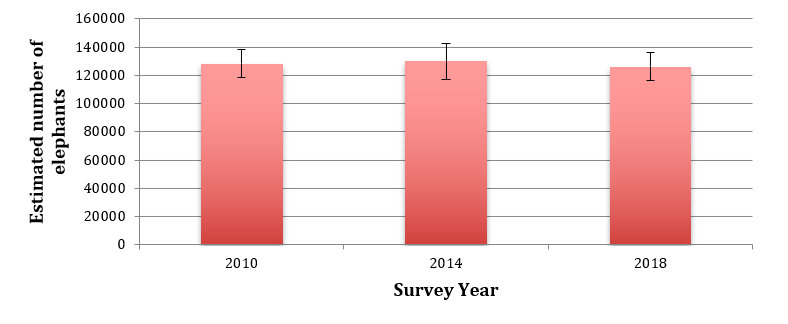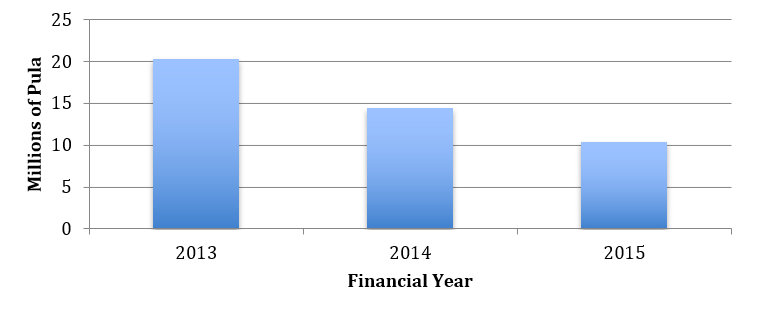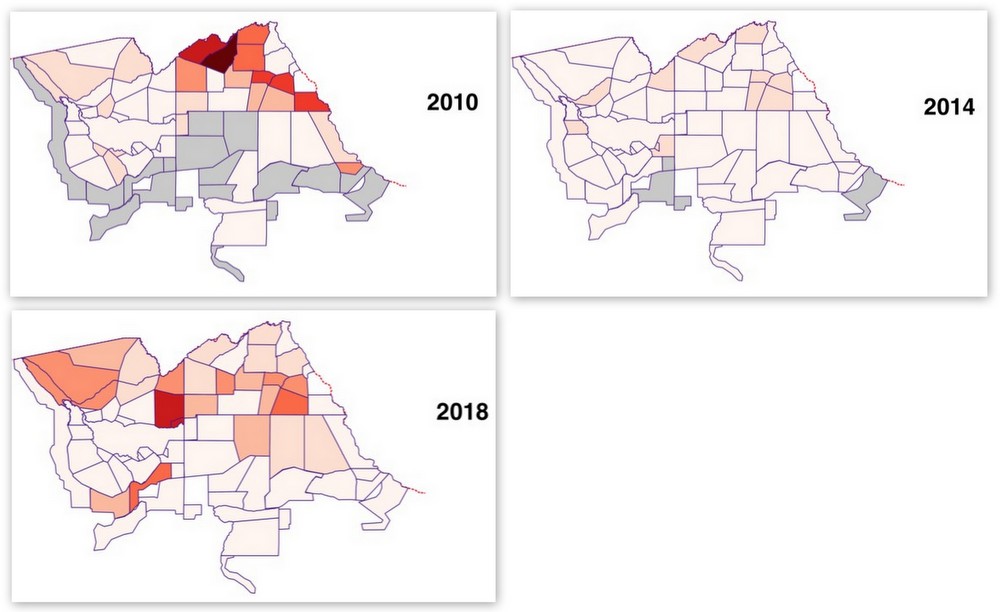
Opinion post from Gail Potgieter – Human-wildlife conflict specialist
The debate surrounding Botswana’s recent decision to lift the hunting ban is highly polarised, and both sides have marshalled various facts and figures to argue their case. These figures, especially the numbers of living and poached elephants, are hotly debated and contested, with some even questioning the motives behind the research.
As a conservation scientist, I am wary of questioning the results of conservation research, especially when it is clear that the researchers are ultimately interested in conserving wildlife. I have therefore sought to cut through the politics of the debate, focus on the actual research results and draw some conclusions, which I want to share with you.
I used published scientific articles by various authors, and reports from aerial surveys done by Elephants Without Borders (EWB) in 2010 (before the ban), 2014 (soon after the ban was enacted) and 2018 (after four years of no trophy hunting). Using this information and other studies, I will answer three important questions:
a) Was the ban on trophy hunting elephants necessary in the first place?
b) What impacts did the ban have on people and elephants?
c) Where to from here for Botswana’s people and elephants?
WAS THE BAN ON TROPHY HUNTING ELEPHANTS NECESSARY IN THE FIRST PLACE?
The ban on hunting in Botswana was total – it outlawed all forms of hunting any species on state land (the only exception was privately owned game farms). This covered everything from ordinary citizens hunting for the pot to trophy hunters paying exorbitant amounts of money to hunt the Big 5 – including elephant.
Considering that the hunting industry earned P33 million (about US$ 3 million using current exchange rates) for local community organisations between 2006-2009 while photographic tourism earned only P4.4 million (US$ 405,000) in the same period for the same communities, one would imagine that the government must have had very good reasons to ban hunting. Elephants and the other members of the Big 5 are the biggest earners for this industry, so a partial ban that excluded these high-value species would have had less economic impact. Since the current international furore centres on elephants, I will focus on the rationale for banning elephant hunting specifically.
The decision to ban hunting was hailed in many quarters as a “win” for conservation. But was it really? When deciding on a major policy change like this one the biggest questions from a conservation viewpoint are: 1) Are the population numbers of the animal in question increasing or decreasing? And 2) Are the threats to this animal (e.g. poaching) increasing or decreasing? The EWB aerial survey reports answer these questions quite well. For easy reference, I have graphed the elephant population estimates from the three EWB reports covering northern Botswana below (the reports can be obtained from EWB’s website).

If the elephant population was in trouble, then one could understand a hunting ban for this species. The aerial survey data actually reveal that the elephants were doing fine in the period 2010-2014 when hunting was still allowed. Additionally, the survey reports for 2010 and 2014 suggest that elephant poaching was not a major concern. Indeed, in 2014 record low numbers of fresh elephant carcasses were seen from the air, and when researchers visited the accessible carcasses on the ground they assigned all of them to natural causes.
The 2010 survey reported interesting results for a number of other species. Wildebeest populations appeared to be declining across northern Botswana. Five other antelope species, plus zebra and warthog all increased over a 10-year period in the Chobe District in the east, while four antelope species plus giraffe, ostrich and warthog declined in the Okavango Delta area in the west. Finding out whether these population trends were due to human threats or ecological changes (the Delta is a highly dynamic ecosystem) would be impossible from an aerial survey alone. Some of the more concerning trends thus required further research to inform management decisions.
Despite claims that the decision to ban hunting in 2013 (enacted in 2014) was based on conservation concerns, there is no evidence that elephants needed extra protection, although the aerial survey trends for other species required further investigation. I worked in Botswana from the end of 2014 to 2018, and all of the conservation scientists I met while there agreed that the hunting ban was not based on good evidence.
WHAT IMPACTS DID THE BAN HAVE ON PEOPLE AND ELEPHANTS?
Even though science-based reasons for the ban were in short supply at the time, there remained a possibility that it could improve the lot of local people and/or the elephants. In hindsight, the opposite is true. Local community organisations lost millions of Pula in annual income (see graph below) from the year prior to the ban to the year after its effect, along with 200 local jobs. While those supporting the hunting ban point to economic gains made by the country from growth in photographic tourism, the people who live with the elephants did not see this economic windfall.

Instead, poverty and hardship only increased – besides income and jobs, a valuable source of protein (in the form of meat from trophy hunts) was also lost. While many people in developed countries have converted to vegetarian and vegan diets, they have access to a variety of vegetables, meat replacement meals and protein supplements. Fresh vegetables and soy-based products are unobtainable luxuries for people living in these far-flung rural areas.
As for the elephants, the EWB aerial survey in 2018 revealed that while the overall population remains relatively stable (refer to the graph above), there are worrying signs that poaching is on the rise. In 2010, EWB reported 66 fresh elephant carcasses in the Chobe Region; only 20% of these (i.e. 13 of them) were considered poached. In 2014 all the elephant deaths appeared to be natural. In 2018, EWB recorded 87 poached elephants during their aerial survey. In a more recent scientific article by the EWB team, they report that poaching appears to have peaked in 2017-2018 with an estimated 385 elephants poached in northern Botswana during this period. If this threat continues to increase, the elephant population could be in trouble in future.
Interestingly, an independent study that examined poaching rates throughout Africa between 2014-2017 reported an overall decline in elephant poaching. It seems that Botswana, despite its emphasis on anti-poaching and the draconian “shoot-to-kill” policy, has become an attractive target for poachers.
During their aerial surveys, the EWB team counts every elephant carcass they see (maps below, reproduced from EWB data). Although their carcass counts include both natural and poached deaths, poaching was only flagged as a serious problem in 2018. There is also a much broader distribution of carcasses in 2018 when compared with the previous years. This deserves a closer look.

Due to their concern over the poached carcasses spotted during their survey, EWB highlighted areas in northern Botswana where they found the most poached animals. These poaching hotspots are mapped below with the nearby villages and names for each management block (designated by government) provided for context.

The most westerly hotspot is north of the Okavango River (known as the panhandle by locals), and is close to a number of villages that experience some of the highest levels of human-elephant conflict in the country. The hotspot to the east of this one lies directly north of Khwai and Mababe villages. These villagers do not keep livestock or plant crops because they live in a high-density wildlife area; they used to rely on meat produced by the hunting industry to fulfil their protein requirements. In 2013, before the ban, the Mababe community Trust earned P3.5 million and employed 54 local people. In 2018, this Trust earned P1 million (from photographic tourism only) and employs only 8 people; it had to lay off the rest due to mounting tax debts. In the five years since the hunting ban, income from photographic tourism has not replaced income from hunting.
The third hotspot, near Maun (a major town) and Shorobe village has the highest human population density. Elephant sightings were increasing around Maun when I lived there (2014-2018); it appears they were moving further south than usual – to their peril. Finally, the hotspot in NG/42 is a former hunting concession that was abandoned after the hunting ban; no photographic tourism operators have taken over this area to date.

WHERE TO FROM HERE FOR BOTSWANA’S PEOPLE AND ELEPHANTS?
The hunting ban has clearly failed Botswana’s people and its elephants. Research from Namibia indicates that hunting and photographic tourism make joint, but not equivalent, contributions to local communities. They argue that banning hunting in that country would have dire consequences for Namibian communal conservancies that either rely entirely on hunting or a combination of hunting and tourism (only 12% rely on tourism only). The communities in neighbouring Botswana can confirm that prediction from their own real-life experiences.
Furthermore, it is clear that the former President’s combined policies to strip local communities of their rights to use their wildlife while increasing anti-poaching efforts have not helped elephants. This outcome also confirms predictions by scientists that increasing “top-down” law enforcement coupled with reducing local benefits from wildlife conservation is a recipe for increasing illegal wildlife trade. The recent Africa-wide study focusing on elephant poaching adds further strength to this prediction using hard data. They found that reducing poverty and corruption, coupled with reducing ivory prices, would be more effective in reducing poaching than increased law enforcement on its own. Given that Botswana had the lowest level of corruption of all countries in that study, we can conclude that increased rural poverty has most likely played a critical role in allowing poaching to increase.
The “shoot to kill” policy only created tensions with Namibia and Zimbabwe, as the Botswana Defence Force (BDF) gunned down 52 of their citizens suspected of poaching. President Masisi has since reversed this policy and removed military-grade weapons from the Department of Wildlife and National Parks – it is illegal in Botswana for any non-military personnel to use such weapons anyway. This does not mean that the government is no longer doing all it can to prevent poaching. The BDF is still an active part of anti-poaching efforts in Botswana. These soldiers are still armed with military-grade weapons; they are now just expected to show some restraint before pulling the trigger.
Local people are not always directly involved in poaching, but they often know about it. In my work with rural communities in Namibia, it never ceased to amaze me just how quickly word spread of a newcomer or foreigner arriving in the area. The government and its partners in Namibia have taken advantage of that ability by enlisting their citizens in the fight against illegal wildlife trafficking. Tip-offs from locals have stopped poachers before they even killed rhinos in the northwest, caused numerous seizures of ivory in the northeast, and led to the rescue of 62 live pangolins from 177 people who captured them illegally (they were arrested). Where people are not disenfranchised by draconian policies that prevent them from using their wildlife, they can be the best allies anyone can have in the fight against poaching.
With a new President that is committed to listening to his people, the future for conservation in Botswana appears bright. President Masisi is also engaging with his neighbouring countries to improve the management strategies for elephants in the critical Kavango-Zambezi landscape. The government is currently revising their legislation regarding community-based conservation with the aim of reducing local governance issues and ultimately ensuring that people truly benefit from wildlife. All stakeholders, including photographic tourists, should support these new efforts to include the people of Botswana in conserving their wildlife.
I would like to thank the Director of the Ngamiland Council of Non-Governmental Organisations (NCONGO), Siyoka Simasiku, for his input into this document, particularly for the up to date statistics on income for Mababe Zokotsama Community Trust. Rob Thomson pored over all the EWB reports in great detail to produce the maps presented here.
To comment on this story: Login (or sign up) to our app here - it's a troll-free safe place 🙂.![]()






